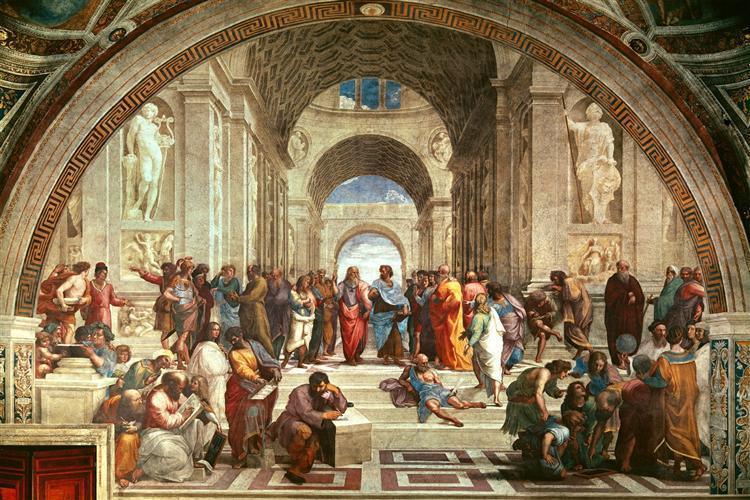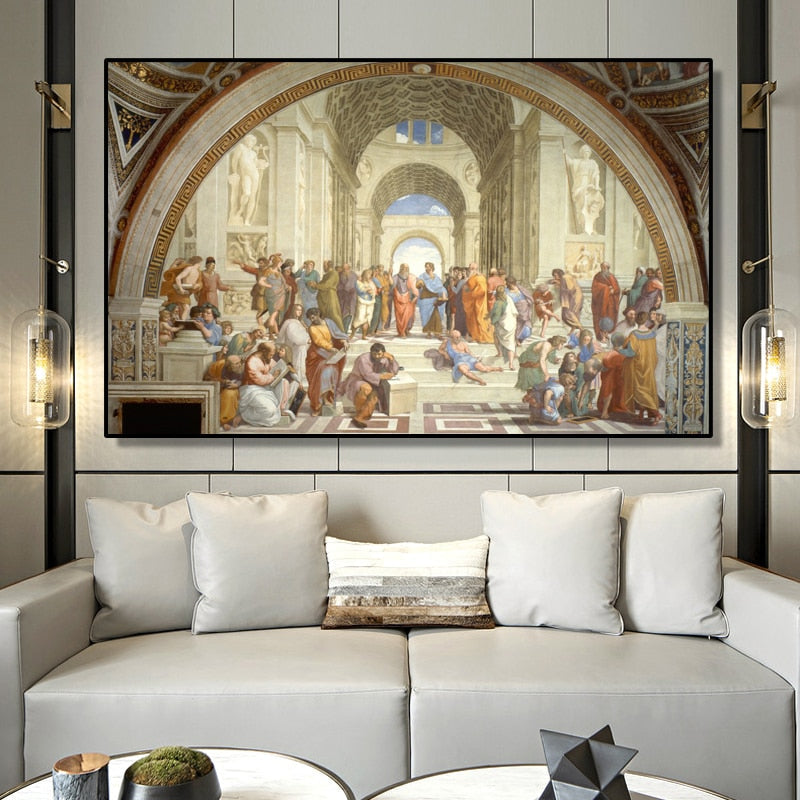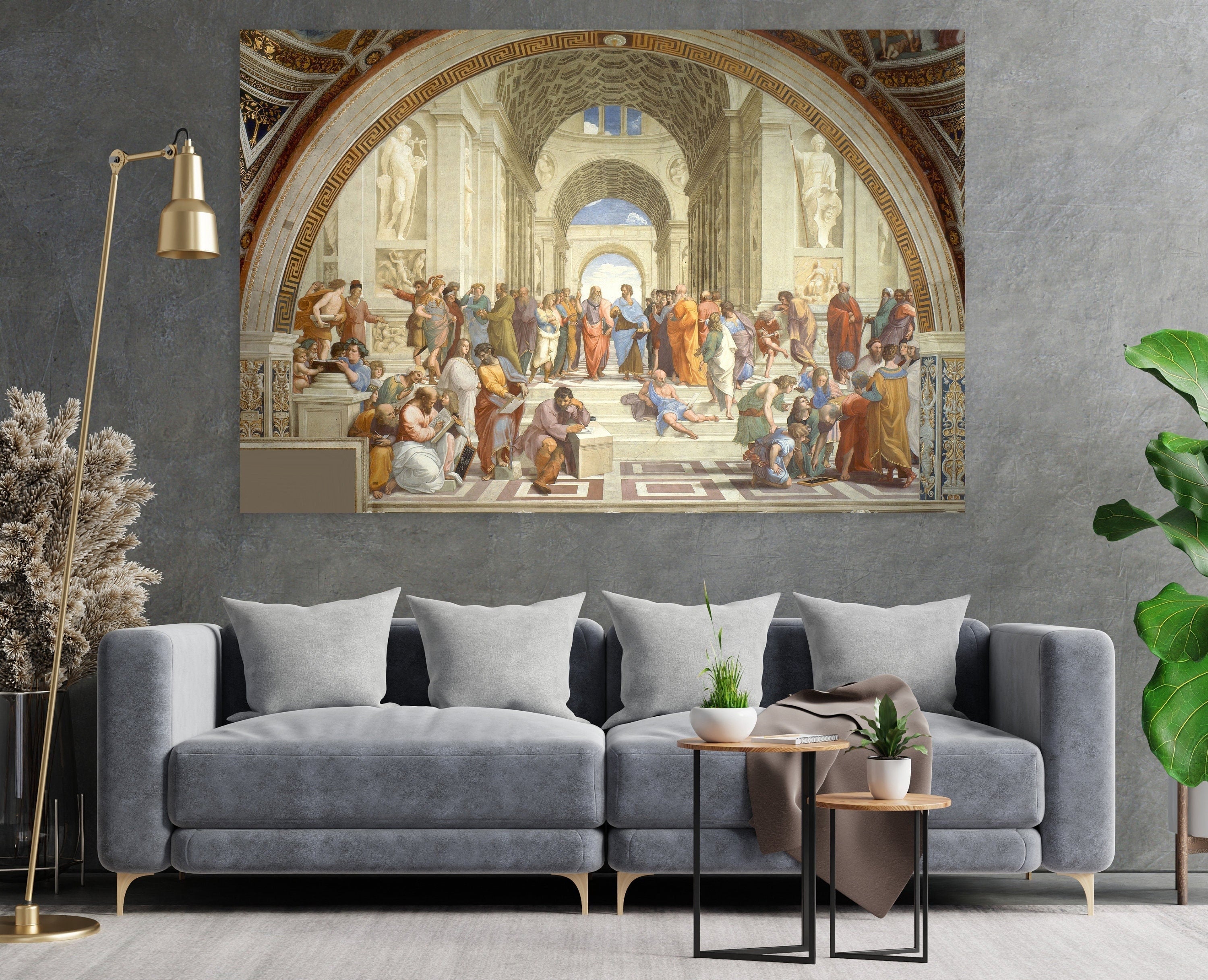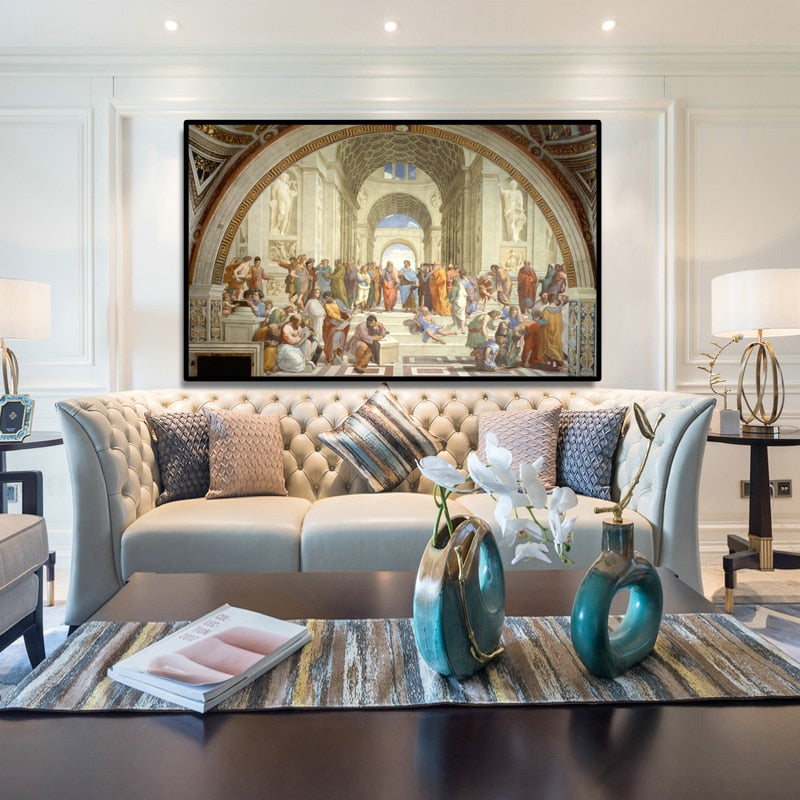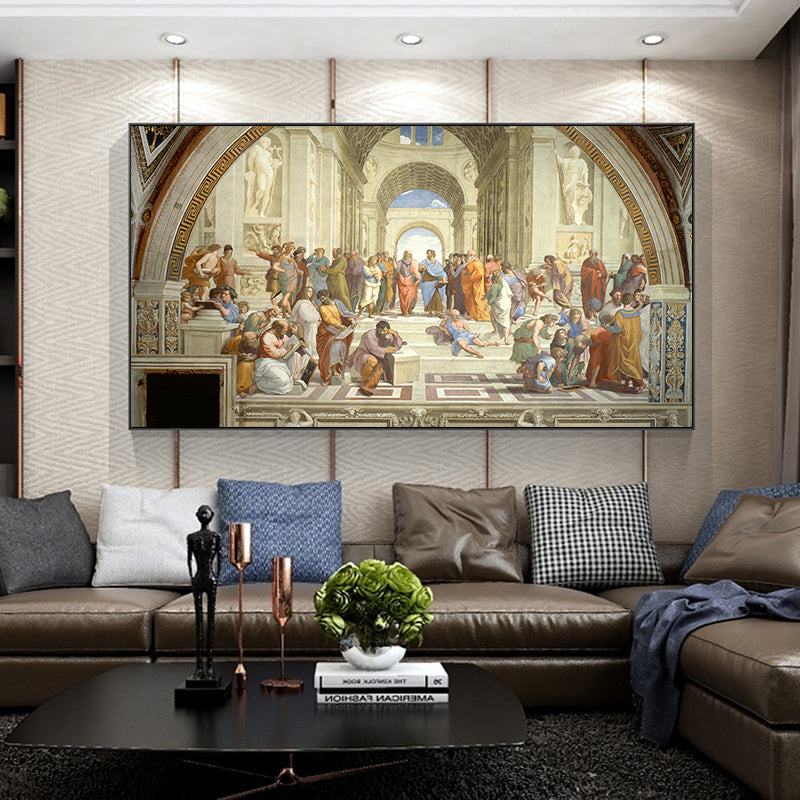Description
The School of Athens painting is one of the most famous works of the Italian Renaissance painter Raphael and is located in the Stanza della Segnatura of the Apostolic Palace in Vatican City.
Sometime between 1509 and 1511, Raphael was commissioned to paint frescoes to decorate the rooms of Stanze di Raffaello in the Vatican's Apostolic Palace. There were four frescoes, representing four branches of knowledge: poetry, philosophy, theology, and law. This particular painting represents philosophy.
The interesting thing about this work is its complexity and its symbolic meaning. The painting represents the greatest philosophers, scientists and mathematicians of ancient Greece, gathered in an imaginary space that symbolizes Plato's Academy in Athens.
Raphael uses classical architecture and ornamental details to create a sense of depth in the painting and to indicate the value and importance of philosophy and knowledge in Renaissance culture. Each figure in the painting represents a specific thinker and has a gesture or pose that symbolizes their contribution to the history of Western thought.
Another interesting fact about this work is that the figure in the center of the painting, who is in the foreground and has his right hand outstretched, is a representation of Plato, while the figure next to him, with his left hand outstretched , is his disciple Aristotle. These two figures represent the two main currents of thought in ancient Greece, Platonic idealism and Aristotelian empiricism, which are still topics of debate and study in philosophy today.
The painting "School of Athens" is considered one of the masterpieces of the Renaissance and has been a source of inspiration for other artists and thinkers throughout the centuries. In addition, her legacy lives on in popular culture, where she has been referenced in books, movies, television series, and video games.
Another interesting fact about the "School of Athens" painting is that Raphael is believed to have included self-portraits of himself and other famous artists of the time within the work. In particular, the figure in the right corner of the painting, with the beard and hat, is believed to be a self-portrait of Raphael, while the figure in the center with the pen and paper is a representation of his great rival, Miguel Angel.
In addition, the work has been the subject of various interpretations and symbolism over the years. Some critics have suggested that the painting represents the ideal of truth and universal knowledge, while others have seen the work as an allegory for the conflict between reason and faith.
The painting has also been used to inspire and symbolize political and social movements. In the 19th century, romantic artists and writers used it to symbolize freedom of thought and creativity, while in the 20th century, the image of Plato and Aristotle has been used as a symbol of philosophy and education in the fight for civil rights and equality.
Because the original painting is a fresco and shows no visible corners, this reproduction contains the figures of the school as painted by Raphael plus the architectural setting from the photograph to form the painting. For KUADROS the decorative details of the building itself are beautiful and for this reason we have decided to include them in the reproduction.
The School of Athens is ranked no. 99 on the list of famous paintings

